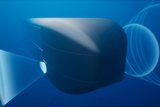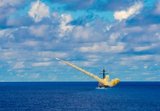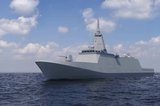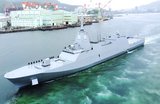US tests AN/SPQ-9B’s PDD capability
The upgraded Periscope Detection and Discrimination (PDD) capabilities of the AN/SPQ-9B anti-ship missile defence radar have been successfully tested by the US Navy, it was announced on 17 March.
The PDD mode improves the submarine detection capabilities of the AN/SPQ-9B radar in support of the navy's overall anti-surface warfare efforts.
The live-fire testing of the system was conducted off the coast of California from USS Lake Champlain with the vessel's 5-inch guns to verify the new mode on the SPQ-9B while the crew underwent operator training.
The navy awarded a contract for AN/SPQ-9B production to Northrop Grumman in December to provide radar systems with the PDD mode to DDG 51-class destroyers.
Rear Adm. Jon A. Hill, program executive officer for Integrated Warfare Systems (PEO IWS), said: ‘Our men and women have worked so hard to develop the technology for this key capability. We are eager to move forward with delivery of this upgrade to the fleet to improve their warfighting capability.’
Related Equipment in Defence Insight
More from Naval Warfare
-
![US Navy advances with the Harpoon Service Life Extension Programme]()
US Navy advances with the Harpoon Service Life Extension Programme
The US Navy plans to improve Harpoon’s anti-ship and land attack capabilities by equipping the missiles with sensors and technologies required for succeeding in future battlespace.
-
![Mitsubishi eyes future with Australia’s Mogami selection]()
Mitsubishi eyes future with Australia’s Mogami selection
With Australia’s selection of the Mogami-class for Project Sea 3000, Mitsubishi is investigating local production in the next decade as potential export opportunities emerge.
-
![Hanwha wins Australian government approval to increase its stake in Austal]()
Hanwha wins Australian government approval to increase its stake in Austal
The contract would mean the two shipbuilders can collaborate strategically and enhance shipbuilding capabilities in Western Australia.






















